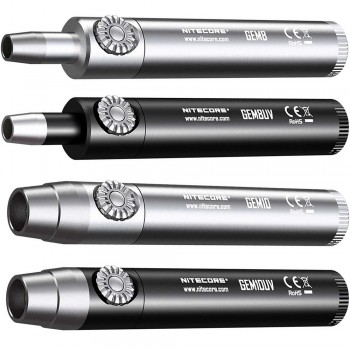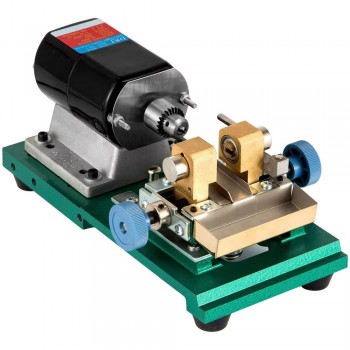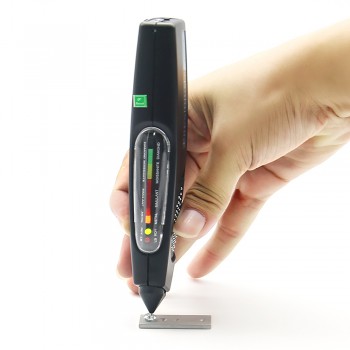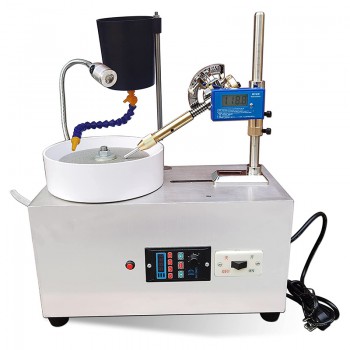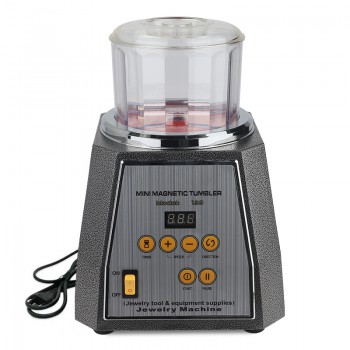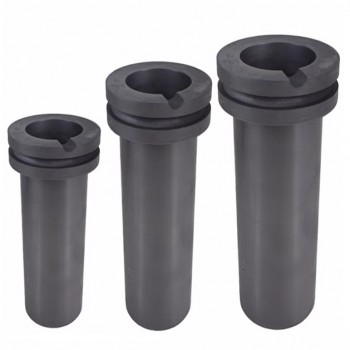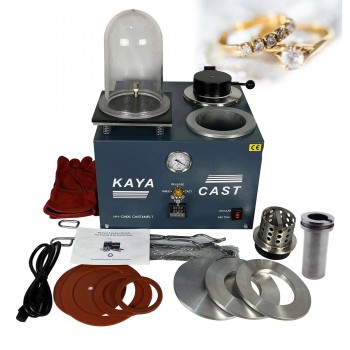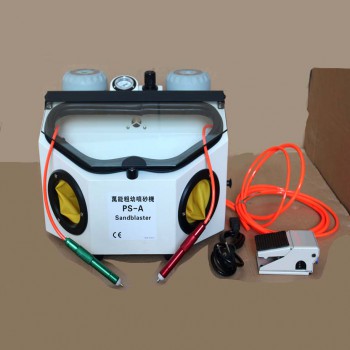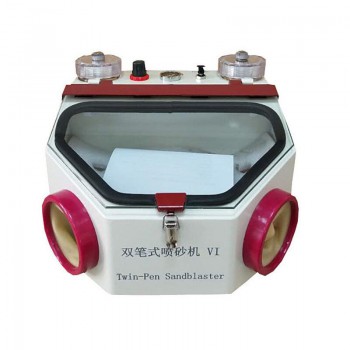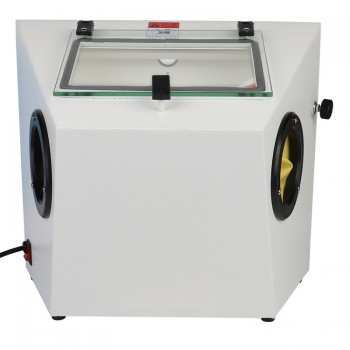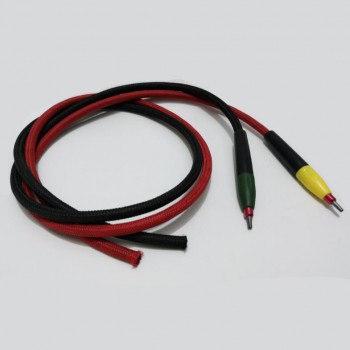
Jewelry Sandblaster
Guide on How to Choose Jewelry Sandblaster
What Is a Jewelry Sandblaster?
A jewelry sandblaster is a bench machine that directs compressed air and abrasive media through a nozzle to texture, matte, clean, or prepare metal surfaces. A jewellery sand blasting machine is used on gold, silver, platinum, and stainless parts to remove oxides, casting residues, or to create uniform satin finishes prior to plating or final polishing.
Working Principle
Inside a sealed cabinet, air pressure carries abrasive media (aluminum oxide, glass bead, or garnet) toward the workpiece. Flow is controlled by foot pedal or hand valve. Impact from the particles lifts surface contaminants and modifies roughness. Nozzles with different orifice sizes focus the stream; pressure and media grade determine aggressiveness. Visibility windows and internal lighting support accurate targeting while keeping dust contained.
Core Features and Characteristics
Typical elements include a pressure regulator, moisture trap, media hopper, blast gun, viewing window, gloves, and dust extraction port. Some units add manometers, quick-change nozzles, and replaceable window films. A compact jewellery sand blasting machine may integrate LED lighting and a small cyclone to reduce airborne fines. Cabinet size, door design, and gasket quality affect access and containment.
Media Selection (Process Planning)
Aluminum Oxide: Strong cutting action; common for oxide removal and uniform matte.
Glass Bead: Rounded profile that supports gentle peening and surface blending.
Garnet/Other Minerals: Alternative grades for specific textures or environmental preferences.
Match media size (e.g., 60–150 mesh) to target finish and feature size; finer grades aid detailed components, coarser grades increase cut.
How to Choose
When selecting a jewelry sandblaster, review:
Cabinet Volume: Fit rings, pendants, and small batches without crowding.
Pressure Range & Control: Adjustable regulation helps tune texture across alloys.
Nozzle Material: Tungsten carbide or boron carbide nozzles offer extended wear life with hard media.
Filtration & Dust Port: Compatibility with external extractor improves clarity inside the cabinet.
Ergonomics: Glove reach, viewing angle, and lighting affect handling accuracy.
Application Range
A jewelry sandblaster supports oxide removal after soldering, pre-plate keying, satin finishing, and selective masking for pattern contrasts. It is also used on watch cases, clasps, and small hardware. For mixed workflows, blasting can precede ultrasonic cleaning or tumbling to standardize surfaces before inspection.
Buying Considerations
Before choosing a jewelry sandblaster for sale, check input voltage for lights or internal fans, compressor compatibility (CFM at operating PSI), and media type supported by the nozzle. Review door seals, window protection films, and availability of spare nozzles. Confirm hose size and fittings match your shop air system. Examine footprint, bench height, and noise implications for your workspace.
Operation, Care, and Maintenance
Sieve and recycle media regularly to remove fines and contaminants. Drain the compressor and moisture trap to reduce clumping. Replace nozzles and window films when wear appears; worn parts alter stream shape and visibility. Keep dedicated media bins to avoid cross-contamination between alloys. Clean the cabinet interior, gloves, and viewing window after shifts; document pressure, media grade, and pass count for repeatable results.


